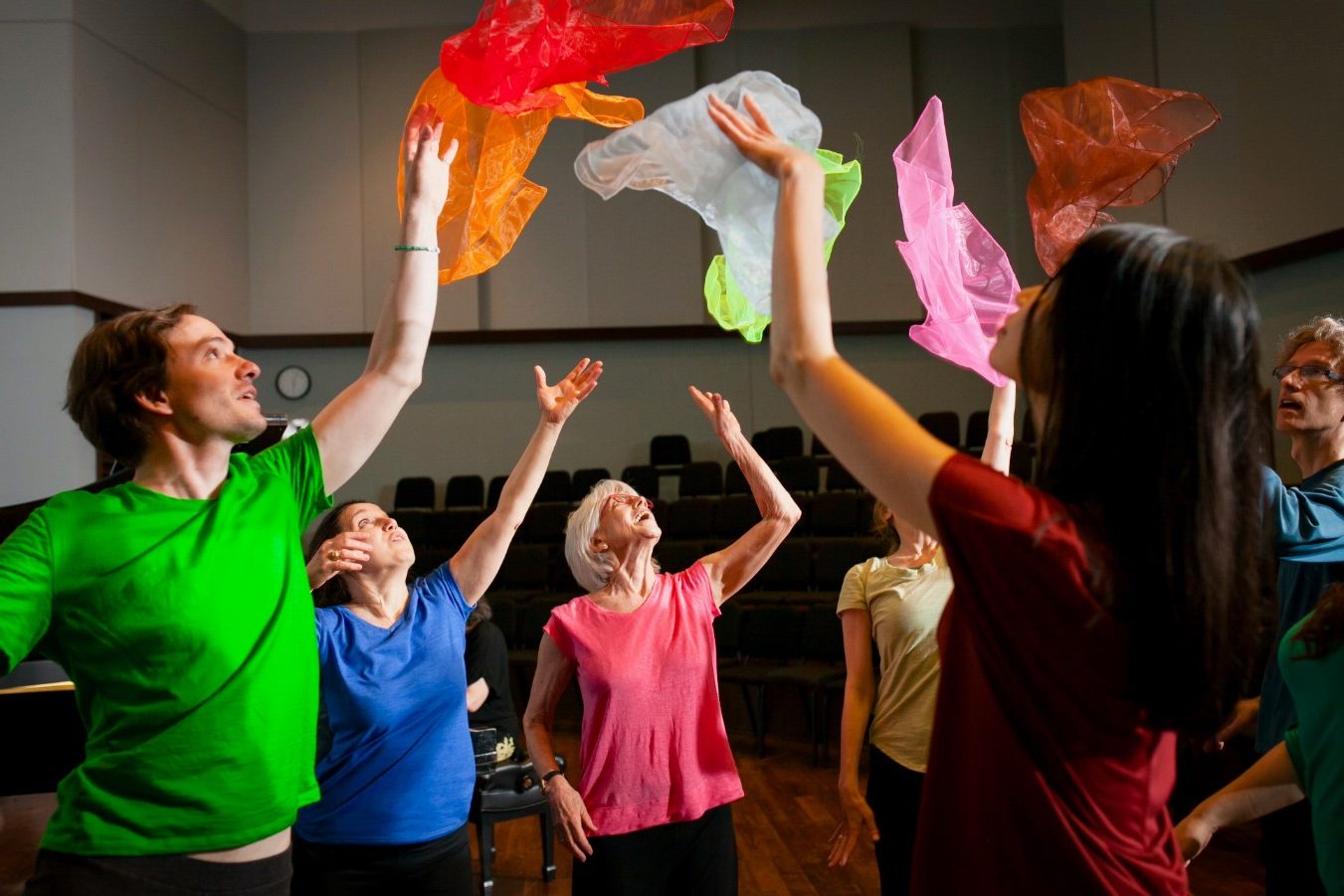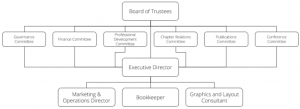Welcome to the Chapter Leadership Toolkit.
This Toolkit provides step-by-step guides to help chapters form, organize meetings, plan events, and more. No matter where your chapter is on its journey, we are here to help and support you.
Dalcroze Society of America
Our Mission + Values
The Dalcroze Society of America (DSA) is a tax exempt, nonprofit association of members engaged in a specific form of Music/Movement Education called “eurhythmics” in English (“rythmique” in French). In the global community of eurhythmics teachers, the DSA functions as the United States delegation to La Fédération Internationale des Enseignants de Rythmique (FIER: International Federation of Eurhythmics Teachers). FIER encompasses many varieties of eurhythmics, Dalcroze Education being but one. All DSA members are de facto members of FIER.
The DSA’s founders were either teachers who held the Diplome Supérieure from the Institut Jaques-Dalcroze (IJD), or their students—many of whom held the Dalcroze License or Dalcroze Certificate. As Dalcroze Diplômés, the founders had the implicit consent of the IJD’s Collège to use the name “Dalcroze” when they officially incorporated the DSA in 1978. To this day, the DSA remains the only Music/Movement Education professional organization in the USA authorized to use the name Dalcroze by the school that Emile Jaques founded. However, many DSA members practice other modes of music education, too.
The DSA is dedicated to serving the following threefold purpose pertaining to the professional practice of Dalcroze Education, the extended global community of practitioners and institutions dedicated to this practice, and the general public’s awareness and appreciation of it.
In fulfilling our mission we strive to:
- Sustain and expand the professional practice of Dalcroze Education in the USA and in the world in the following ways:
- Assemble the resources Dalcroze Education needs to survive and grow, and make them accessible
- Facilitate the professional development and training of Dalcroze educators and artists
- Collaborate with and oversee the accreditation of Dalcroze training programs in the United States
- Strengthen our connections to the global community of practitioners and institutions dedicated to Dalcroze Education in the following ways:
- Enable individuals to connect and network with one another
- Work together with our global partners to achieve common goals and objectives
- Raise the general public’s awareness and appreciation of Dalcroze Education through the following means:
- Promote the artistic and pedagogical principles of Emile Jaques-Dalcroze
- Support educational workshops and publications through financial and consultative assistance
- Encourage growth of local chapters and study groups throughout the United States

As the owners and stewards of the organization, the DSA’s National Board and its various committees and task forces, its local Chapters, indeed, its entire membership all work together to fulfill this threefold purpose.
Organizational Structure
The DSA is governed by a Board of Trustees, charged in the DSA Bylaws to oversee the organization, design and implement policies, ensure that all activities comply with state and federal laws, and sustain the DSA’s fiscal well-being and reputation. The Executive Director and staff are responsible for enacting the Board’s vision. The Marketing and Operations Director oversees the DSA’s general operations and supports the various Board-appointed committees, task forces, and chapters that actualize the Board’s vision.
The national organization has several standing and ad hoc committees. These include the Finance Committee, Governance Committee, the Chapter Outreach Committee*, the Conference Committee, and more. All active DSA members are eligible to serve on committees at the national level.

*Formerly “Chapter Relations Committee.” The “Conference Committee” is now called the “National Events Committee.”
DSA Chapters act as branches of the DSA, working in their local communities and regions to support Dalcroze Education in the USA. Each chapter operates slightly differently, seeking the best ways to make a difference in its community. For instance, some chapters focus on hosting study groups; others, on planning workshops.
Chapter Representation on the Chapter Outreach Committee
The Chapter Outreach Committee is chaired by a DSA Trustee and consists of the DSA Board Chair, who serves ex officio, but who does not vote, and other trustees or DSA members. Each DSA Chapter may name one of its officers to serve as a delegate to the DSA Chapter Outreach Committee and represent its interests at the national level.
Current DSA Chapters
The DSA authorizes its members to form chapters in specific places in the USA. The DSA formally recognizes and supports the activities of the following chapters.
Currently, we also have members in Los Angeles, Chicago, and Cleveland who have been building momentum toward chartering a DSA chapter.
Types of chapters
DSA Chapters may operate at the local (eg., Philadelphia), state (eg., New York), or regional level (eg., New England, Northwest, Rocky Mountain). A Chapter’s name should accurately reflect the geographical area where it will conduct its activities (eg., Northern California). See the section on Naming Chapters, under Bylaws.
The geographic area a chapter encompasses is typically defined in terms of its members’ home addresses. When someone joins the DSA, if they live in an existing Chapter’s designated area, they automatically become a member of that Chapter by virtue of their state of residence and/or zip code. Chapters conduct their activities exclusively in the area designated in their Bylaws and may not conduct activities in areas outside of that area. A DSA member can only belong to one chapter. If a prospective DSA member lives beyond a Chapter’s designated area, but participates in that Chapter’s activities, they may opt in by selecting it when joining the DSA or by submitting a formal request to the DSA’s administrative staff at chapters[at]dalcrozeusa.org.
Chapter Benefits
All DSA Chapters:
- Use the names “Dalcroze” and “Jaques-Dalcroze,” as well as the DSA’s name and logo, in your promotional materials. No other entities have the legal authority to do so.
- Generate revenue, raise funds, and receive donations without incurring a tax burden on the Chapter Executive Board or members by virtue of the DSA’s 501(c)(3) tax exempt status (see section on Tax Exemption).
- Provide insurance for your events under the DSA’s liability and officer insurance coverage.
- Utilize the DSA’s infrastructure, institutional memory, mailing lists, and administrative support in order to facilitate their activities.
- Get support in planning your events (see Workshop Planning Guide) and help in promoting your activities on the DSA website, in publications, and on social media at no cost.
- Apply for financial support to underwrite your activities, if needed.
- Participate in a program to help offset chapter event discounts to DSA members
- Get involved in a vibrant Music/Movement Education organization that operates on national, regional, and local levels.
- Advance the DSA’s mission.
Chapter Responsibilities
Becoming a DSA Chapter comes with certain responsibilities. Chapter leadership must:
- Upload periodic reports to the Chapter’s folder in the DSA’s Google Drive. (To learn more, contact the Chapter Outreach Committee Chair at chapters[at]dalcrozeusa.org.)
- I.e. “On January 5, we hosted a Saturday workshop presented by Lisa Parker. It was attended by 35 people and was a huge success. We are in the process of designing next year’s workshop schedule and hope to partner with a local dance school.”
- Upload an Annual Report to the Chapter’s folder in the DSA’s Google Drive by June 30 (the close of the fiscal year). This report includes:
- The names and titles of the chapter’s executive board members for the new fiscal year
- Any changes the chapter anticipates making in its bylaws in the coming fiscal year
- A summary of the chapter’s previous year’s activities, including event attendance numbers/lists all relevant spreadsheets of the previous fiscal year’s annual budget, with actual figures as well as projections
- A description of the forthcoming fiscal year’s anticipated program and budget